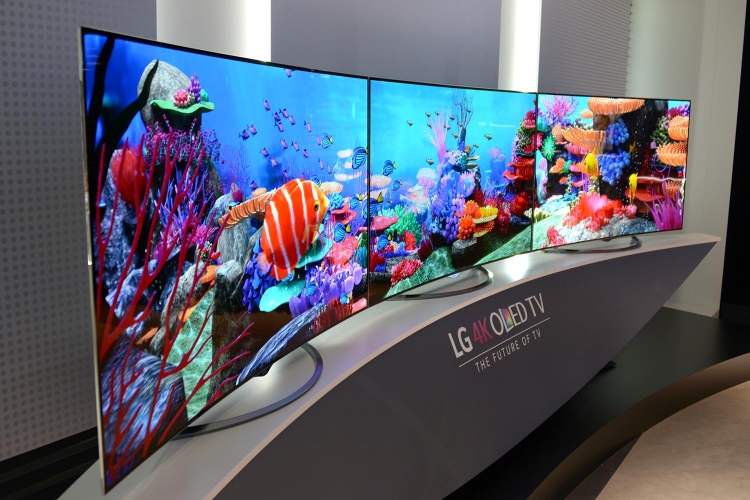2018: What to Expect in TV Displays
In the last decade, we’ve seen dramatic improvements in TV screens. HD has given way to 4K, the first HDR screens are on the market, and OLED and QLED displays have become practical. We don’t expect innovation in screen technology to come to a halt, but it won’t be moving at the blistering pace we’ve seen lately. So what will we find in video displays in 2018?

Incrementalism is likely to be the dominant theme in video display tech this year. Most developments will merely build on radical technical leaps of the past, very few being completely new to the consumer market.
Still, some interesting prospects are on the near horizon. Here are a few of the most important changes in video equipment that we will see in 2018:
How often do you think about the cables connecting your TV set? They don’t get much respect. They can be critical, though, for the quality of your TV sound and picture.
The current HDMI 2.1 specs were published only in November 2017. This obviously leaves an excruciatingly tight time frame for manufacture of 2018-model TV sets or other devices that will comply with the new standard. Almost no HDMI 2.1-compliant sets, therefore, will be on the market until late in the year.
For now, you don’t need to worry about their absence. The HDMI 2.1 spec is almost outrageously future-proofed. Some of its capabilities, including 8K resolution and much higher frame rates, won’t be available in consumer TV for several years. A TV set you buy this year can handle the best available content for several years.
Quantum Dot LED (QLED) TV have gotten a lot of press in the last two years. QLED sets have shown great promise. They can’t yet match the overall picture quality of OLED, though, lagging in refresh rates and contrast.
2018 may be the year QLED catches up. Some experts are placing their bets on emissive quantum dots (EQD). EQD sets have been hyped as the “true QLED” that video buffs have awaited eagerly for years.
With EQD, miniscule quantum dots actually emit light instead of merely enhancing LCD backlight. They could also match or surpass OLED’s “infinite” contrast ratio, with far lower power consumption, and with a much wider and more intense color gamut.
4K & HDR Everywhere
You’ll see many 4k and HDR sets this year. Almost every manufacturer is producing models that can handle both specs.
Both formats were developed at least two years ago, but are difficult to build into TV screens. Also, very little programming has been available in either format, because they require new cameras and editing tools.
That will change in the new year. Almost all new display screenss will be compatible with both formats, and studios are beginning to produce a wide array of video content for them.
Local dimming is independent brightening or dimming of different areas of the screen. The more expensive TV sets released in 2018 will feature it.
Samsung wants to challenge the technical leadership of OLED. For this purpose, it’s expected to offer a Micro LED display.
In concept, the technology far older than you’d guess. Micro LED was invented seventeen years ago, and Sony demonstrated a working model in 2012. Techniques for its manufacture were extremely expensive, though, so it wasn’t suited for the consumer market.
Refined manufacturing techniques, enabling relatively cheap bulk production, may finally bring Micro LED to us in 2018.
Micro LED screens feature extremely small diodes, each emitting its own light, eliminating need for an LCD backlight. Each diode can be switched on or off separatelyly, enabling OLED-like contrast and rapid refresh rates.
Samsung is expected to demonstrate a 150-inch Micro LED model at the Consumer Electronics Show in January, and to release smaller consumer versions later. The latter may be available for purchase by the end of the year.
Voice Control
Voice control is hardly new. Voice-activated video screens and remote controls have been on the market for years. Early versions were buggy, though, and they often compromised user privacy.
For 2018, voice control and interactive displays will be much more reliable. One of the most important developments on this front is manufacturer collaboration with Amazon and Google. Video displays will be synced with Alexa and Google Home systems.
(For streaming TV, you need a reliable internet connection. Talk to us. We can help.)





